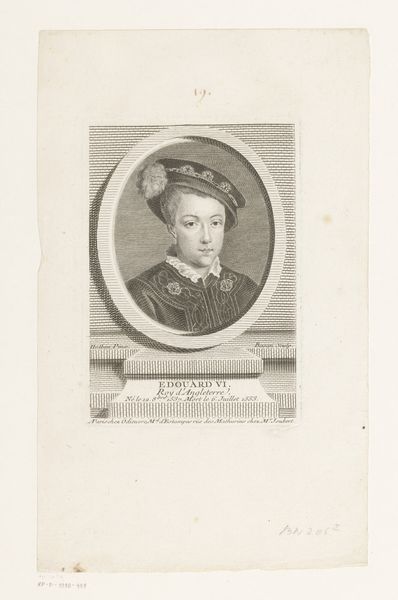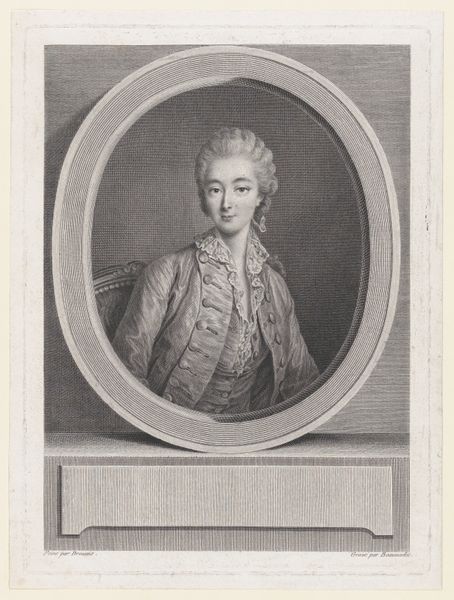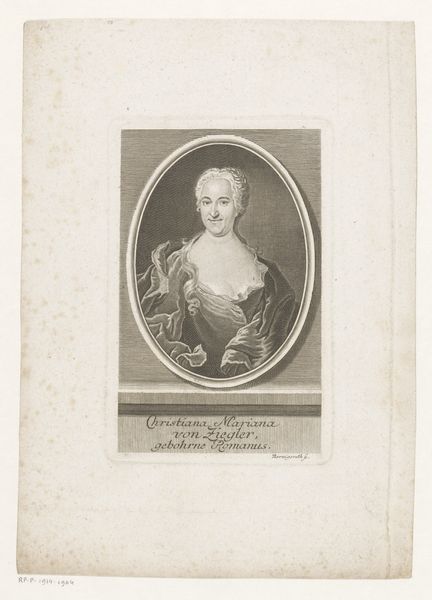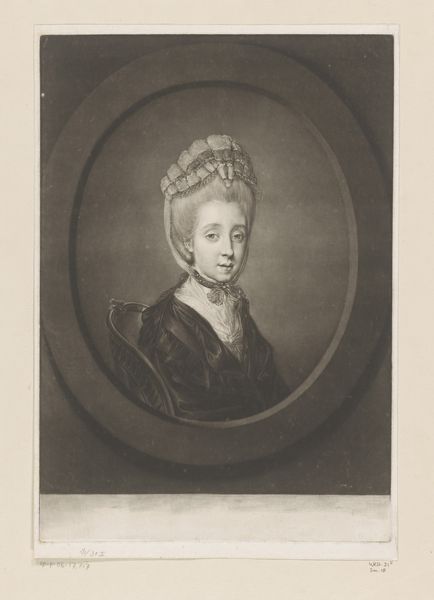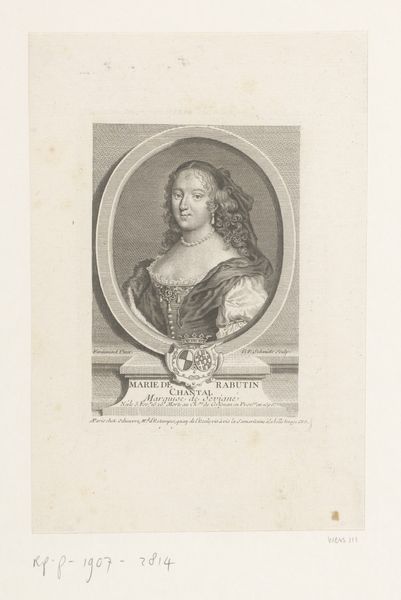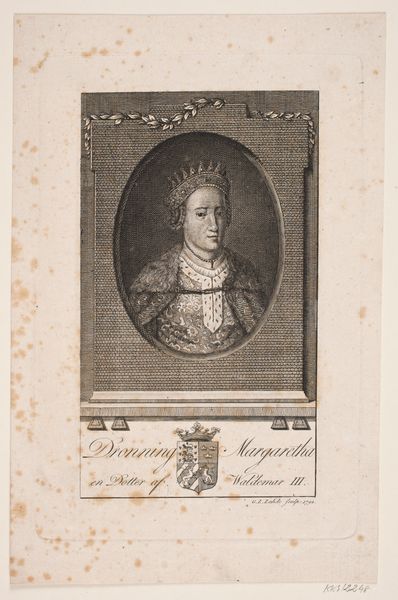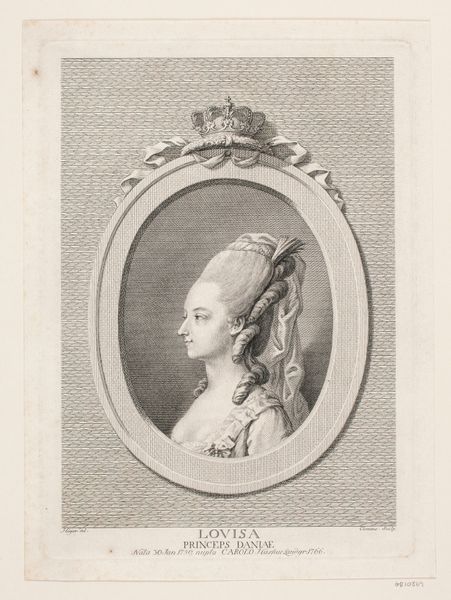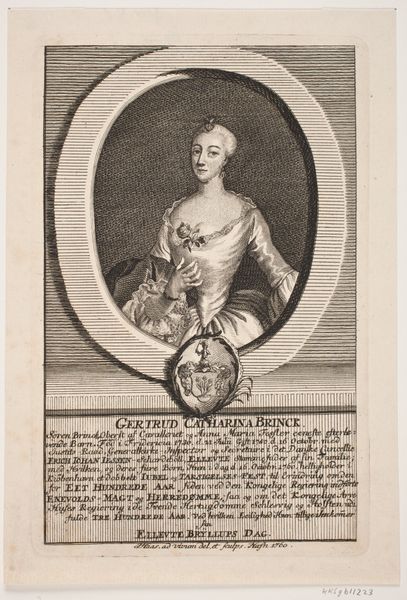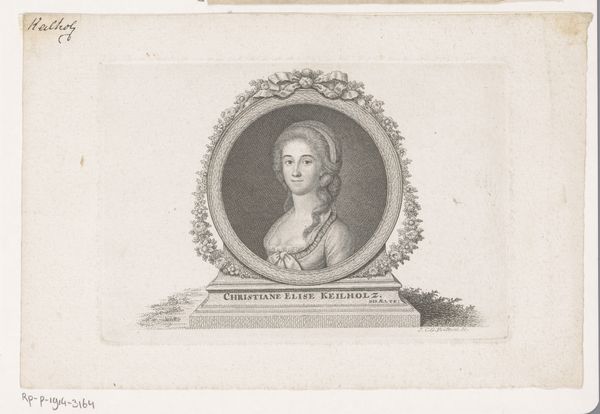
Anne de Chaumont-Guitry, Comtesse d'Amblimont 1780 - 1817
0:00
0:00
drawing, print, paper, pencil
#
portrait
#
drawing
#
neoclacissism
# print
#
paper
#
pencil
#
19th century
Dimensions: Plate: 3 3/16 in. (8.1 cm) Sheet: 3 7/16 × 2 15/16 in. (8.8 × 7.4 cm)
Copyright: Public Domain
Curator: Here we have a portrait by Pierre Michel Alix, "Anne de Chaumont-Guitry, Comtesse d'Amblimont", likely made between 1780 and 1817, executed as a pencil and print drawing on paper. Editor: It's striking how delicate it is. The monochrome palette lends a certain quietness, almost as if capturing a fleeting, private moment. I’m also drawn to the small scale of it. It has an intimate feel. Curator: Yes, its scale speaks to a tradition of portraiture popular at the time. This print participates in a wider culture of image production and consumption, offering access to representations of the elite. It allows us to study the ways identity was constructed and disseminated within that historical context. Editor: I can’t help but consider the woman represented—the Comtesse. She appears young, perhaps newly married, almost idealized in her presentation. It makes me wonder about the constraints placed upon women of her class, and how much of her 'self' is present versus the performance of femininity. The lace and high coiffure read more like markers of status. Curator: Precisely, the clothing, hair, and even the idealized features emphasize her position. Looking closer at the line work, you can tell Alix was influenced by the Neoclassical movement. He has a delicate technique typical of the period. But it isn't only technical—Neoclassicism, as a cultural and political movement, shaped her self-representation for public consumption. Editor: I agree. There's something almost clinical about the rendering of her features. But the overall image also strikes me as very sanitized. The revolution that ended this world would not have looked this neat, quiet, and comfortable. It provides an interesting perspective about image-making and propaganda of the era. Curator: Absolutely. Images like this offer insight into the power structures of the time. Considering the revolutionary turmoil, a work like this served a function. This drawing offers not just a record but participates in shaping an image of nobility for future observers like us. Editor: Engaging with artworks like this forces us to unpack layers of historical context. I leaves me wondering, how do we deconstruct these symbols and narratives to find agency of its female subject within broader socio-political circumstances. Curator: It encourages us to contemplate these complex histories, the role of images, and their resonance within wider culture of that time. Editor: Yes, the act of looking and questioning enables us to engage in broader social issues of identity.
Comments
No comments
Be the first to comment and join the conversation on the ultimate creative platform.
